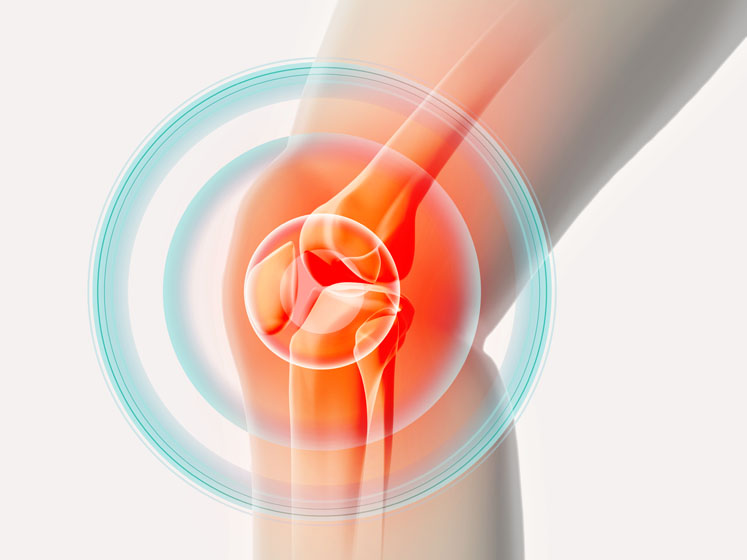Consumers wish to become more proactive towards their health maintenance and optimise their health potential until as late in life as possible. However, this hyper-focus has led them to feel less satisfied with their mobility and placed a greater emphasis on addressing and improving this.
During the last 2 years, one in four consumers believe that their health has deteriorated; as a result, more people have scrutinised their current diets and aim to re-evaluate their eating and drinking habits to take a more proactive approach to their health maintenance to facilitate a healthy lifestyle.
Behaviours and attitudes
Attitudes towards health are evolving. Consumers are embracing the concept of healthy ageing as opposed to avoiding it — taking a long-term approach to prevent health issues before they arise and minimise vulnerability to disease and illness.
Although COVID-19 is not directly linked to joint and bone health and is a long-term problem that consumers have always been aware of, it can be safely suggested that the pandemic positively motivated consumers to improve their health and well-being in the long-term to stay active and mobile.
The link between good joint and bone health and good overall health is becoming more established; this gives brands a great opportunity to explore multifunctional benefit claims and how this positively influences consumers and their shopping habits.
People increasingly recognise that poor diet and lifestyle choices contribute to potential and pre-existing health problems. Eating unhealthily, lack of exercise and spending too much time on digital devices without recommended breaks are all behavioural traits that will increase the risk of joint and bone health problems in the long-term if not addressed.
By contrast, extraneous activity can lead to tears and aches that lead to joint and bone health problems, with half of global consumers admitting they suffer from either knee, shoulder or back pain on a regular basis. This can be determined by several factors, including an ageing society, poor dietary habits and/or a lack of education about exercise.

Consumers realise that health issues such as poor mobility and brittle bones are something that not only impacts their ability to move freely but can also lead to the risk of serious long-term health problems … as well as significantly impacting their quality of life, which is something that consumers are adamant to avoid.
Consumer actions
FMCG Gurus consumer insights show that 63% of global consumers find product claims positioned around joint and bone health to be appealing (compared with 46% 2 years ago). Despite consumers admitting and recognising they need to improve their health and wellness, the prevalence of lifestyle-related health issues continues to rise.
Ultimately, this suggests actions to improve health are not always successful, highlighting how attitudes don’t always manifest into actual behaviour.
This is an element that brands and manufacturers must note when formulating products aimed at aiding bone and joint health. Although consumers find products promoting good bone and joint health appealing, they may not intentionally seek out these products when shopping.
The obstacle to overcome is achieving consumer commitment to actually purchase said products instead of just considering them to be good in theory.
Consumers most likely want products that actively promote joint and bone health claims to be in the milk category; 78% of consumers look to improve their joint and bone health by increasing their calcium intake, which is conventionally associated with milk and dairy products as well as promoting healthy joints and bones.
Other products of interest are those synonymous with the breakfast table, such as cereals, juices, smoothies and bread. This creates a higher demand for functional ingredient claims to be placed on products that consumed early in the day and also offer a convenient nutritional boost.
This is because consumers are more health motivated in the morning and are more heavily influenced by products associated with indulgence later on in the day.
However, consumers still value indulgence as it is more closely associated with better taste and satisfaction; consumer interest remained high across a range of product categories, particularly those that are associated with being better-for-you and are inherently associated with indulgence.
Conclusion
Significantly, proactive consumers look to products that successfully communicate overall multifunctional benefits with supportive evidence, which is a great opportunity for brands to educate and reinforce the link between good joint and bone health to overall health.
After the pandemic, consumers are particularly concerned about boosting their immunity to maximise their health and minimise the likelihood of falling sick. Therefore, brands can offer awareness of additional health benefits beyond basic nutrition, which will stimulate consumer interest and make people more likely to purchase products that provide an optimised health boost (when promoted in a convenient and accessible way).
This encourages brands to educate consumers about tried and trusted ingredients as well as creating room to explore new and novel ingredients to aid good health and the maintenance of joints and bones.
The heart of consumers’ aspirations to achieve good joint and bone health is to facilitate healthy ageing to stay fit and active for as long as possible, minimise the risk of suffering from joint problems, aches and brittle bones, and sustain overall health and well-being.
This article is based on FMCG Gurus: Joint and Bone Health – Global Report 2021.




